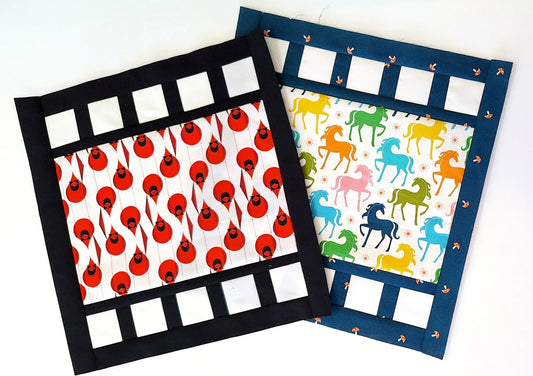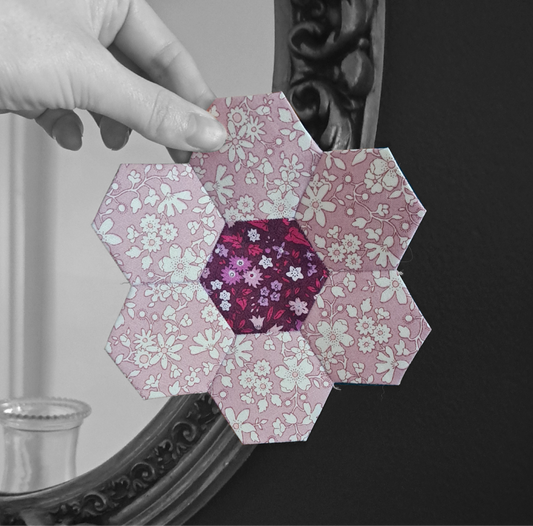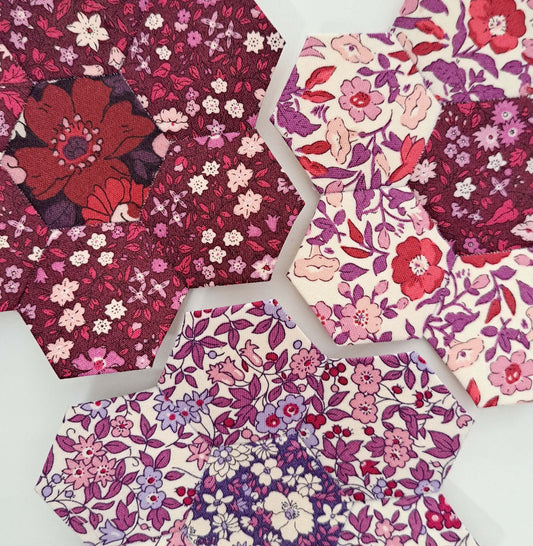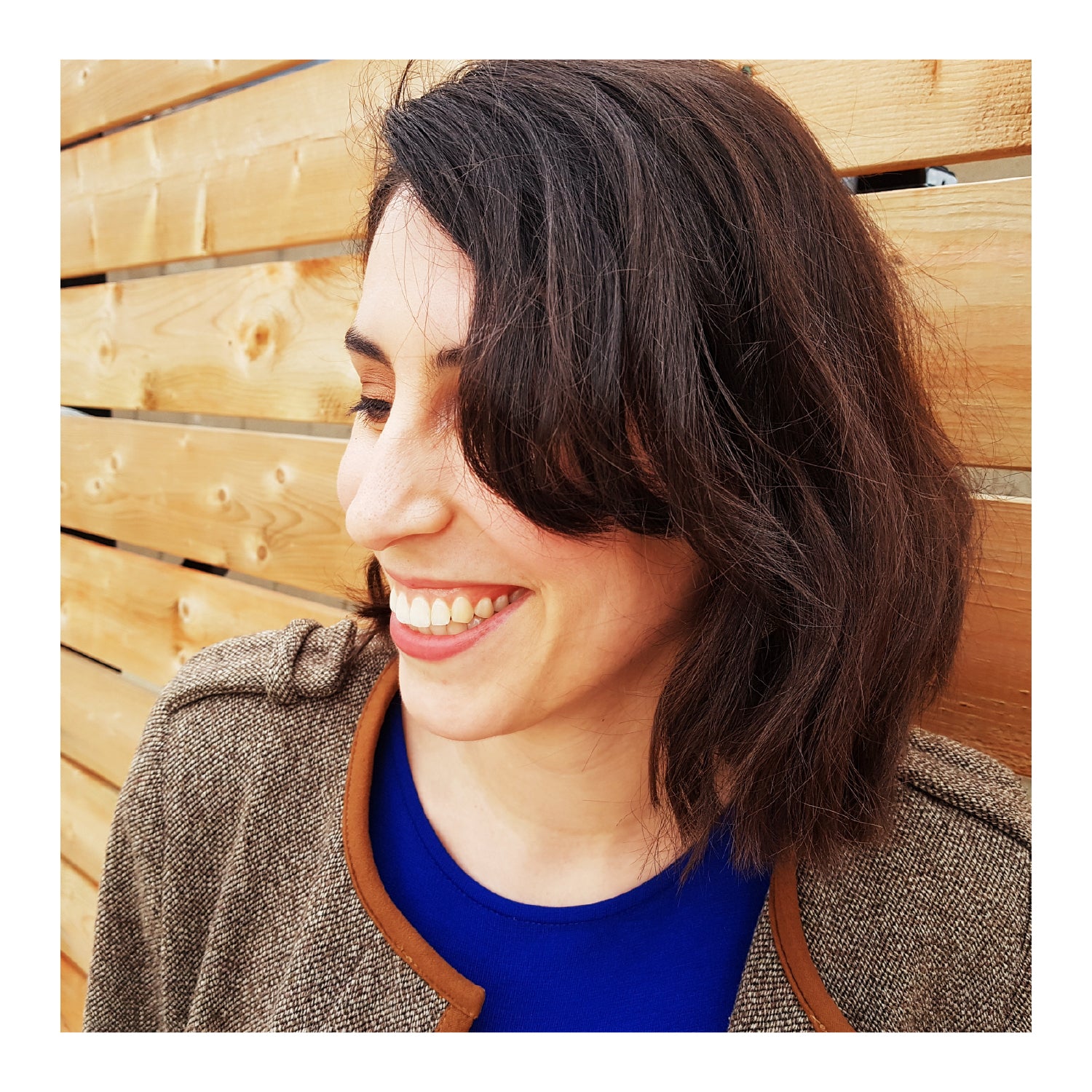The first quilt pattern I designed was an exercise in problem-solving. I initially considered making the block using traditional piecing, but quickly found the bias edges and bulky centre unwieldy. To put it simply, it was a disaster.
I knew there must be a better way to piece the block and, with some guidance from the quilting community, I found the answer in foundation paper piecing. The technique eliminated fiddling and guesswork, and gave me the perfect block I was looking for.
In this blog post, I'll breakdown FPP with an easy-to-understand description, including its advantages and disadvantages. I encourage you to give the technique a shot - I'm certain that you'll love it.
Now, let's dive in!

What is foundation paper piecing?
Foundation paper piecing (FPP) is a sewing technique used for piecing patchwork quilts. I like to compare it to two activities: colouring by numbers and puzzles.

A quilter's first task is to create the pieces of the puzzle using a specific coding system, and then, they can puzzle each piece together to achieve the pattern's final design.
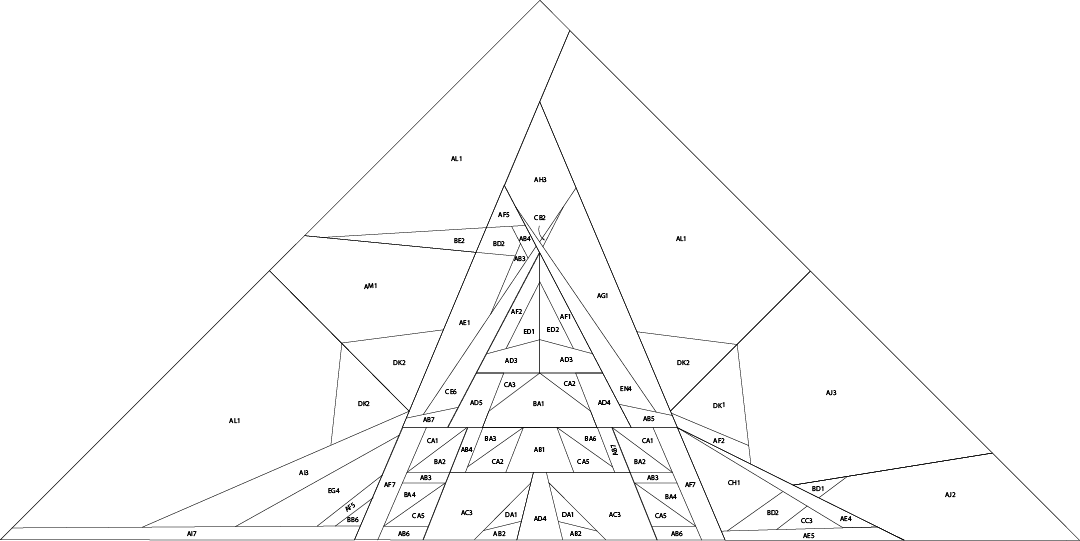

The term 'foundation paper' refers to the paper templates that are used to guide quilters while sewing. You can think of them as individual "colour by number" worksheets.
Designers use a coding system (containing numbers, letters, and lines) to instruct sewists where to place their fabrics and how to sew them together.
Each designer will have their preferred coding system, but a well-designed template should communicate at least three important things:
-
each section within a template
-
the fabric (colour) to use on each section, and
-
the order in which the fabrics must be sewn to their respective sections.
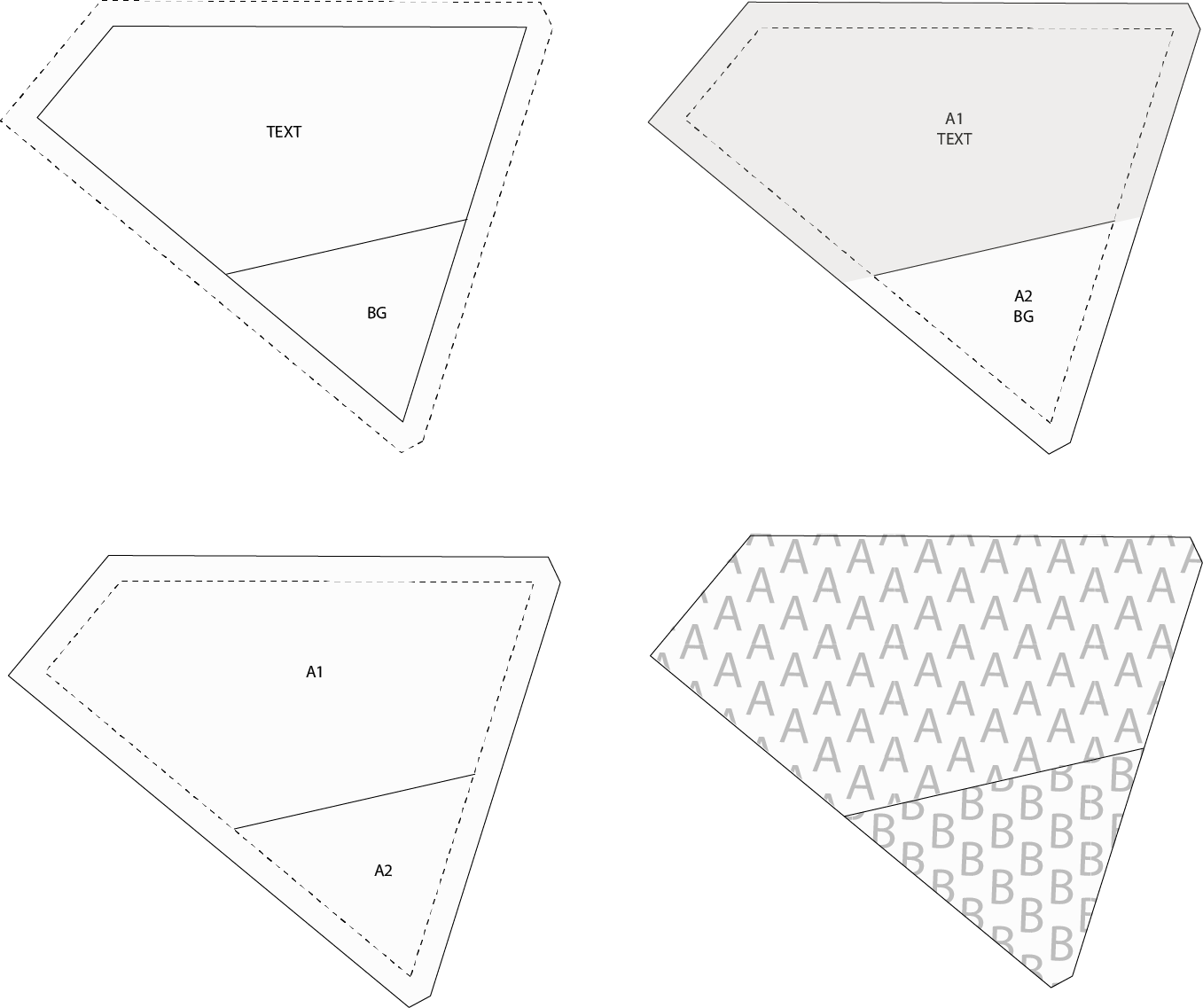
The illustration above demonstrates that templates can look a variety of ways while sharing the same information. Quilters should familiarize themselves with the pattern's coding system before beginning their project.
With this information, quilters are able to sew their fabrics to the 'foundation paper' and successfully piece a quilt or a portion of a quilt. Using the solid lines printed on the template as sewing guides, quilters skip the hassle of a mastering a consistent 1/4" seam allowance while still achieving an accurate quilt block each time.
Foundation paper piecing process
Establishing a comfortable workspace and rhythm is important too. A well thought-out process will make the most of your time at the sewing machine. Quilters flow through the following steps to piece each FPP template:
-
trimming
-
sewing
-
pressing
-
folding
-
repeat
Once all the FPP templates are pieced and assembled, you can create your quilt sandwich, quilt it, and bind it like any other quilt.
Foundation paper piecing for beginners
Although FPP seems intimidating, it can be a beginner-friendly technique with the right quilt block. If you're looking to give it a try, I encourage you to begin with traditional quilt block patterns that have been constructed using FPP.
Some popular choices include: log cabin block, economy block (pictured below), or a flying geese block. Each of these blocks will help you improve your foundation paper piecing skills as you become more comfortable with the technique.
You may also find beginner FPP patterns that provide cutting instructions, which will help you to avoid common mistakes like cutting your fabric pieces too small.

The photo above features three economy blocks made using foundation paper piecing. You can find the templates and tutorials on the Just Get It Done Quilts blog.
Check out my blog "An Illustrated Guide to Foundation Paper Piecing" for additional information on this technique.
English Paper Piecing vs Foundation Paper Piecing
Before moving on, I want to answer a common question: What is English paper piecing, and is English paper piecing related to foundation paper piecing?
English Paper Piecing (EPP) is another common type of paper piecing. FPP and EPP are often mistaken to be similar techniques, but other than using "paper" to "piece" a quilt top and being scrap-friendly, they have little in common. I will cover the differences between the styles later in a dedicated blog post.

Advantages of Foundation Paper Piecing
FPP is a great technique to help you piece your projects with accuracy, and it grants you the opportunity to make unique-looking projects! You can use it for simple quilt blocks like my Butterfly Waltz as well as complicated quilt designs like Nesting Phoenix. Below are the top 7 reasons to experiment with FPP.


1. Improves accuracy when piecing quilts.
FPP eliminates the need to maintain a perfect 1/4" seam allowance - a necessity for many quilting techniques. Unlike other types of piecing, FPP requires you to prepare the seam allowance as-you-go.
There are handy tools to help you do it too! My favourite is the add-a-quarter ruler in both the 6" and 12" sizes.

Finally, the lines on the template make sewing the fabric pieces together easy. Just sew on the line. Yes, it's that simple! No overthinking, just shorten your sewing machine's stitch length and sew.

The printed FPP templates include guides to help you trim your block to the perfect size once you've completed sewing your fabric pieces to the paper. This makes the assembly of your templates a smooth and easy process.

2. Makes complex blocks and designs easy to piece.
The true wonder behind FPP patterns is that they can make beautiful projects without using traditional quilt blocks. Many FPP patterns are totally unique, often depicting kitschy iconography, wildlife and horticulture, or abstract and angular designs.
Designers revel in the freedom to design beyond the limitations of traditional blocks. And while the designs can seem overwhelming at first glance, they come together just like any other quilt - block by block, unit by unit.
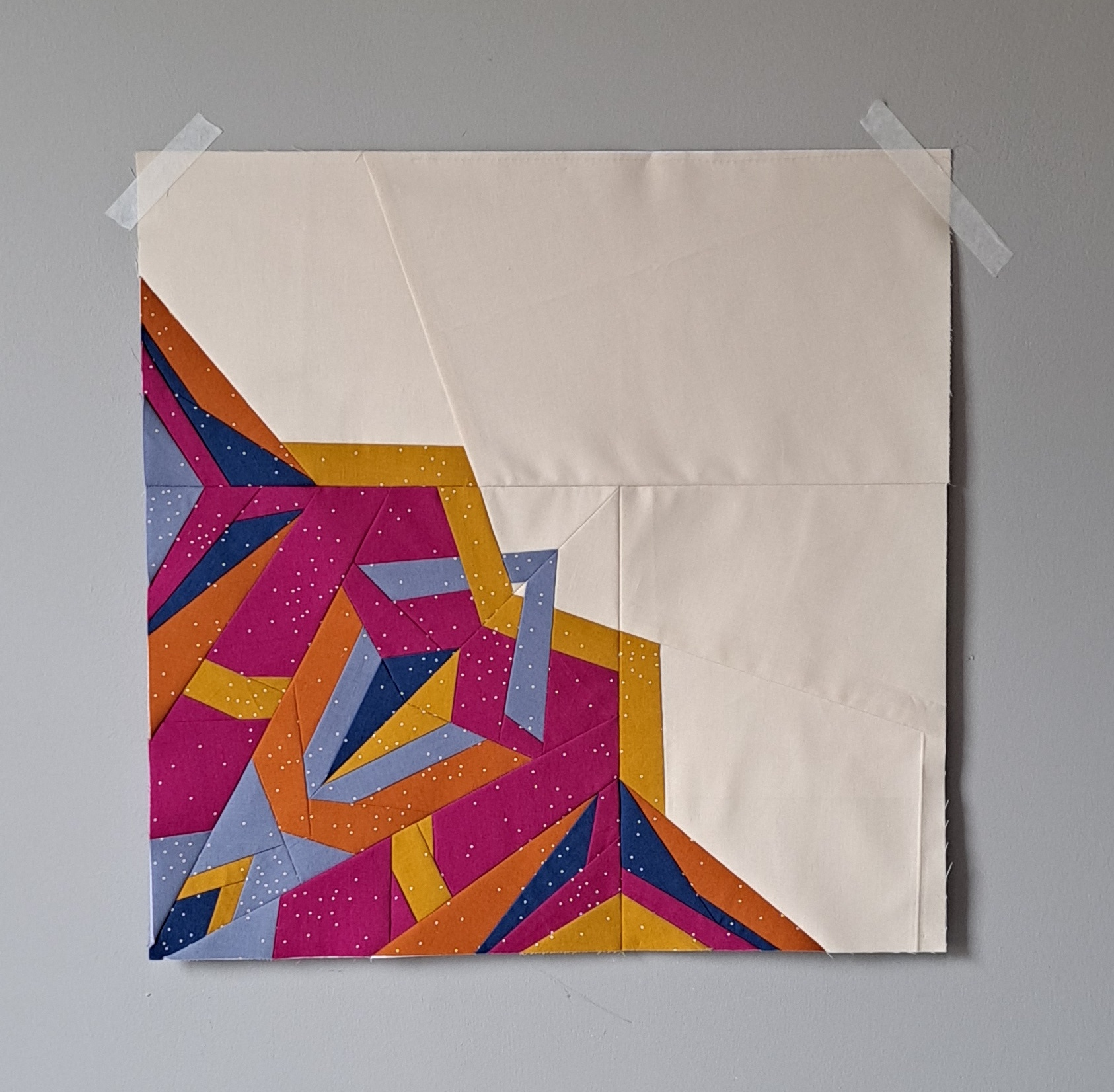
3. FPP makes it easy to manage small fabric pieces and blocks.
Quilters often focus in on the size of the pieces in an FPP pattern, some of which can be very small.
It's important to recognize that quilters aren't sewing tiny pieces to the templates, often you will sew a fabric piece that is much larger than the section you are trying to complete, and then trim the piece to size.

4. Makes it easy to get crisp points.
We'd all love to say that our piecing is perfect, but unfortunately it usually isn't. However, with FPP we can get a little bit closer to that perfect block. By following the lines on the templates we can better achieve those crisp points that can be so fleeting when traditionally piecing.

5. Helps to address odd angles and manage bias.
There is no shape that FPP can't manage (even curves are possible!). In quilting, odd angles often have bias edges. A fabric's bias is the diagonal line where the crossgrain and straight grain meet at a 45-degree angle. Cutting fabrics on the bias makes the fabric's edge stretch and trickier to sew with.
In traditional piecing, a fabric's grainline is an important consideration. But in FPP it is less important. Foundation paper piecing allows you to use any shape (cut at any angle) with a lot more control because the fabric piece is secured to the stabilizing paper. Say goodbye to warped quilt blocks!

6. Keeps you organized with labeled templates.
Each paper template is labeled to represent where in the "puzzle" it belongs. There's no need to stop your workflow and label your pieces. You can just sew!
7. Makes the most of your fabric scraps.
There is a common misconception that FPP is a wasteful quilting technique, but I assure you that it isn't. Once you become more familiar with the mechanics of the technique you can better leverage small and awkwardly-shaped pieces of fabric. Experienced quilters can dig through their fabric scraps or cut-as-they-go to complete their paper templates.
Foundation Paper Piecing Challenges
Every technique has its advantages and disadvantages, and FPP is no different. Here is my list of disadvantages:
-
It can require more fabric.
I generally recommend that quilters purchase more fabric than the think they will need. We all make mistakes and, until you're very comfortable with the technique, you may be doing some resewing or cutting fabric pieces that are much larger than you need.
-
It can be slower.
Generally, there can be a lot more sections in a FPP quilt, than a traditional quilt (this isn't always true, of course). This means they typically take longer to complete, but I think the beautiful intricate details are worth it!
-
The paper must be removed.
Once the quilt top is assembled, you must remove the foundation paper before constructing your quilt sandwich and quilting. This can be a tedious and time-consuming task. I like to do this while watching my favourite TV show.

-
Requires more thread.
In order to create a strong quilt top that won't unravel when you tear out the foundation paper, it's important to use a small stitch length when FPPing. The short stitch length helps to perforate the paper and make it easier to remove. This will require more thread.
-
Creates paper waste.
The foundation paper is not re-usable once it is removed from the project. One idea to offset this waste is to purchase recycled paper to print your templates on, and make sure all your scraps go back into recycling.

Wrap-up
Learning to foundation paper piece has allowed me to bring my artistic vision to life, and has made my finished projects look sharp and professional.
If you're new to foundation paper piecing I recommend you start with my Butterfly Waltz quilt pattern, as it has a single repeating template. If you want something a little more adventurous check out one of the star pattern in my Constellations Series!
What do you love about foundation paper piecing? Leave a comment below.

